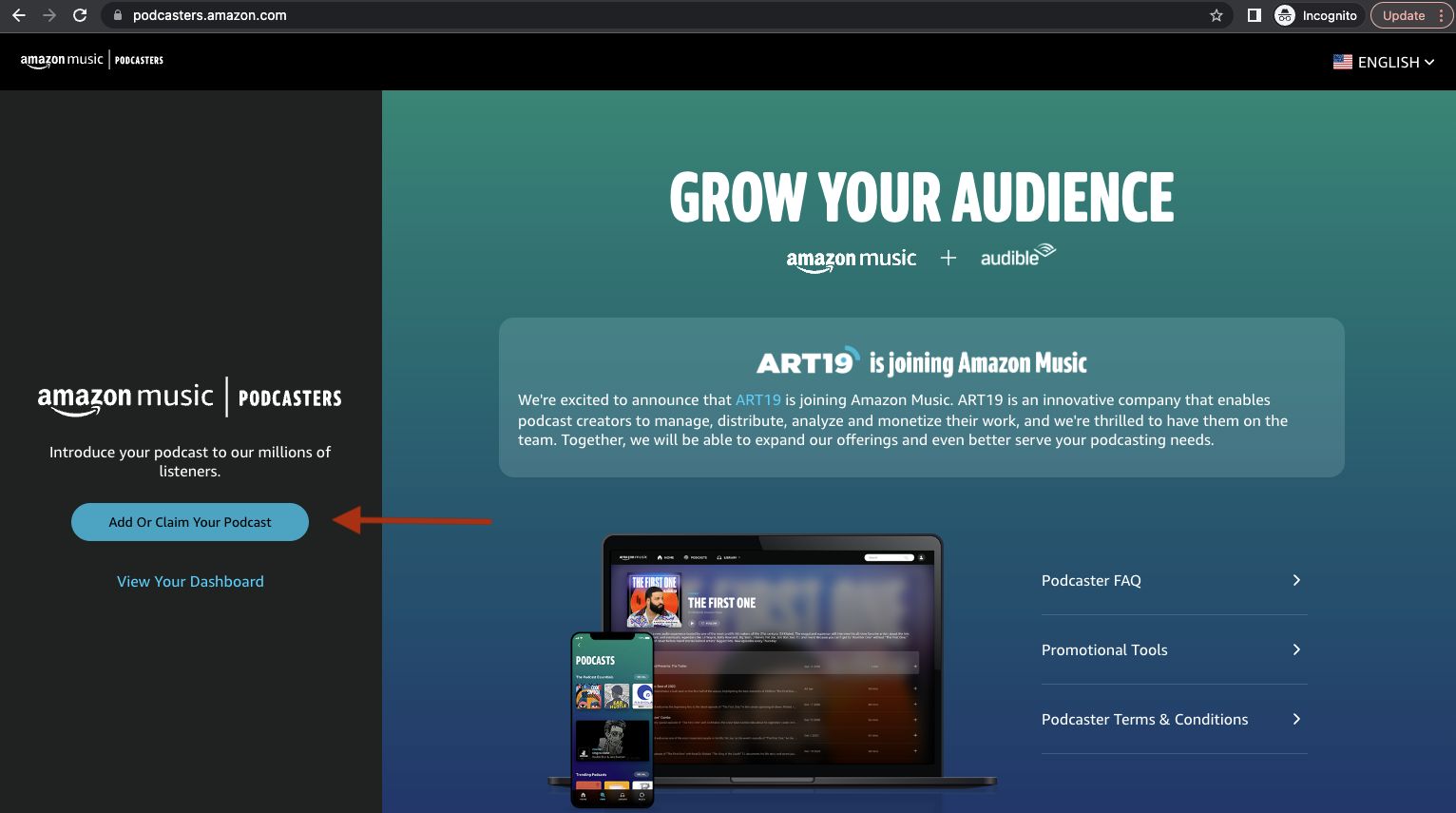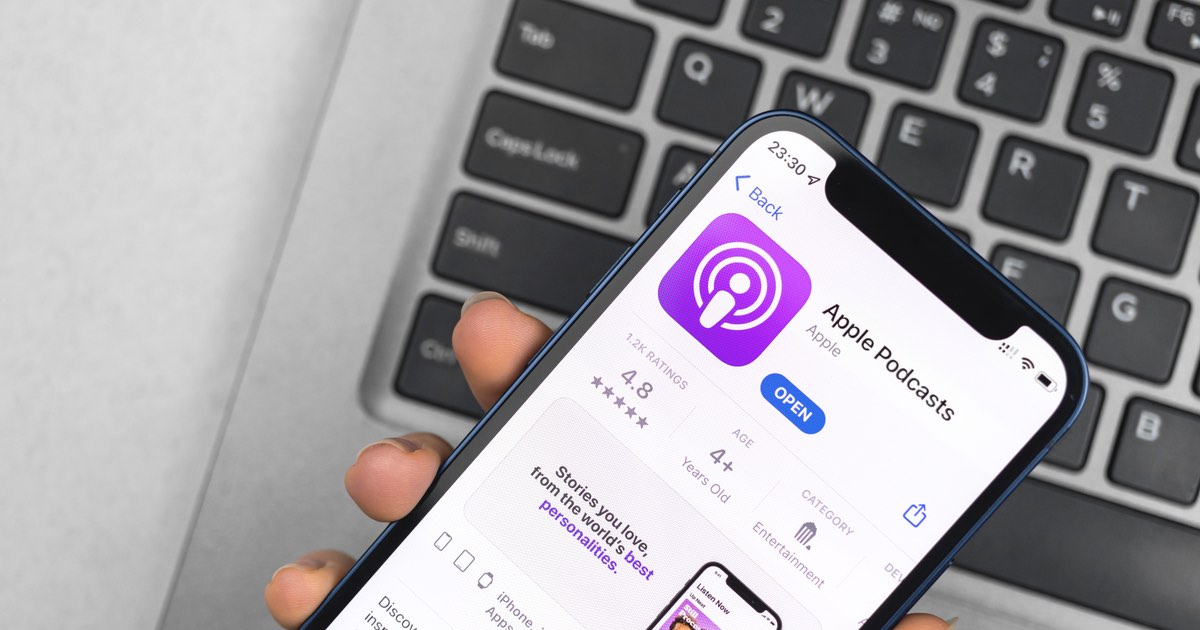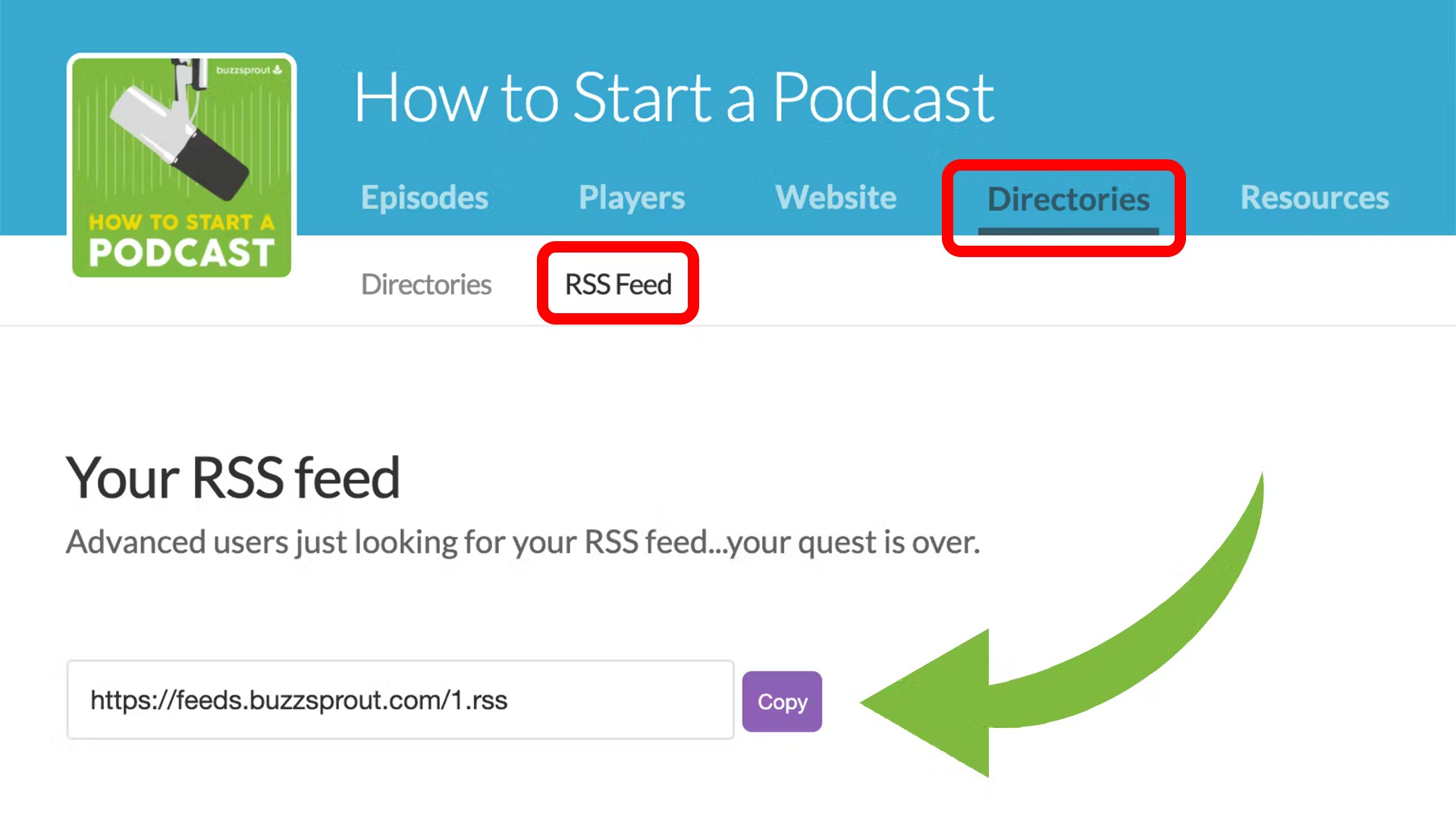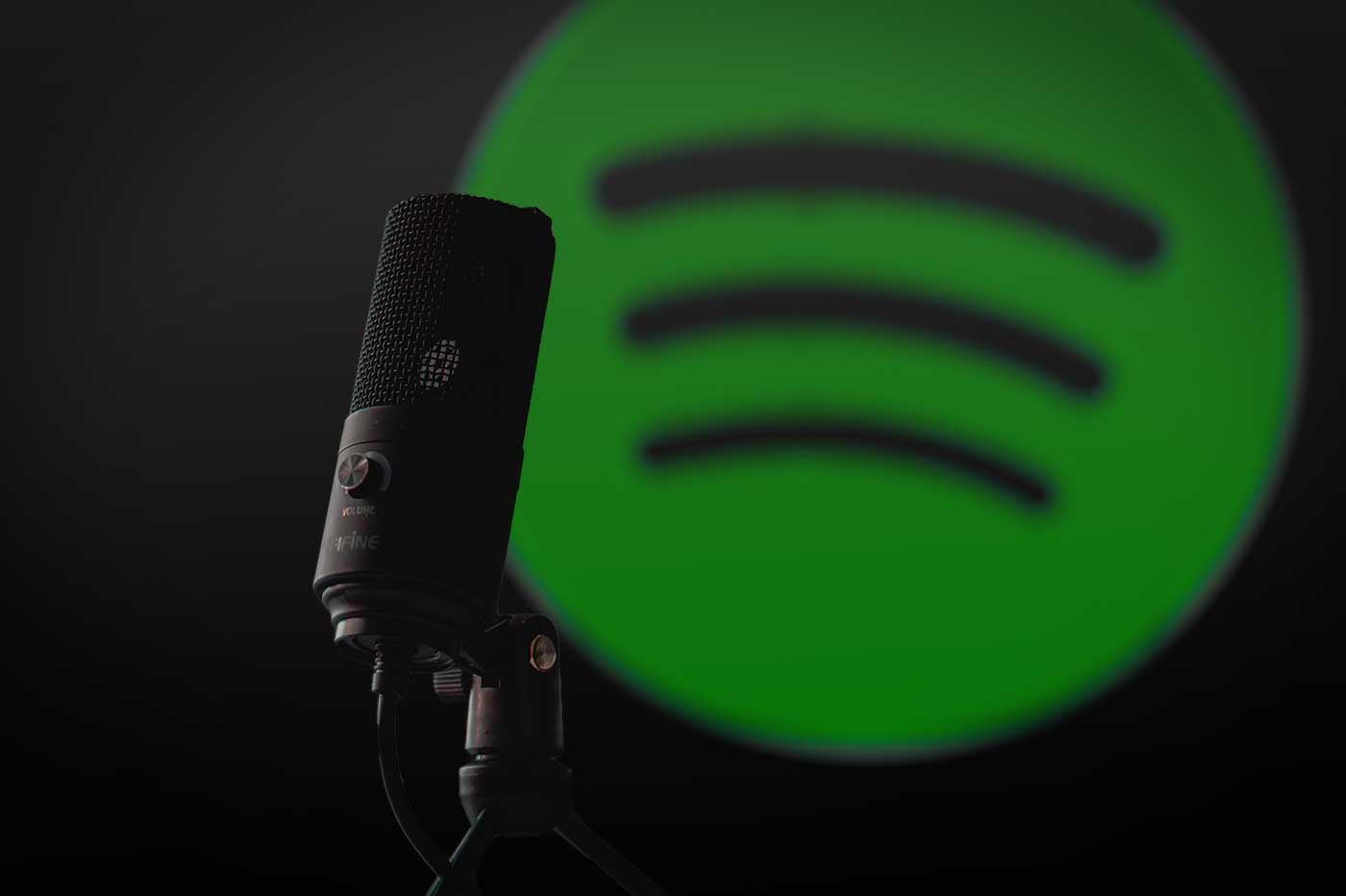Why Promote Your Podcast?
Promoting your podcast is a crucial step towards building a successful audience base and maximizing its reach. While creating compelling content lies at the core of podcasting, it is equally important to spread the word and attract listeners. Here are a few key reasons why promoting your podcast is essential:
- Expand Your Audience: Effective promotion helps you reach a wider audience and increase your listener base. By implementing various promotional strategies, you can attract new listeners who may be interested in your podcast’s topic or genre.
- Establish Credibility: Promoting your podcast helps establish your credibility and reputation as a trusted source of information. As you reach more listeners and gain recognition within your niche, you become an authority in your field.
- Increase Engagement: Promotion enables you to engage with your listeners and build a community around your podcast. By actively interacting with your audience, responding to their feedback, and incorporating their suggestions, you create a stronger connection and foster long-term loyalty.
- Monetization Opportunities: A larger listener base opens doors to monetization opportunities. Once you have a significant audience, you can explore partnerships, sponsorships, and advertising options to generate revenue from your podcast.
These are just a few compelling reasons why promoting your podcast is crucial. By investing time and effort into promotion strategies, you can take your podcast to new heights and achieve the success it deserves.
Establishing Your Target Audience
Identifying and understanding your target audience is a pivotal step in promoting your podcast effectively. When you have a clear understanding of who your ideal listeners are, you can tailor your content and promotional efforts to resonate with them. Here’s how you can establish your target audience:
- Research Your Podcast’s Niche: Determine the specific topic or niche your podcast belongs to. Conduct thorough research to understand the interests, preferences, and demographics of people who are interested in that particular niche.
- Create Listener Personas: Develop detailed profiles of your ideal listeners by considering factors such as age, gender, profession, interests, and listening habits. These listener personas will help you shape your content and promotional strategies.
- Analyze Existing Data: If you already have an established audience, analyze the demographics and analytics data available to you. Look for patterns and insights that can give you a better understanding of your current listeners.
- Engage in Market Research: Conduct surveys, interviews, or polls to gather direct feedback from your audience. Ask questions about their interests, podcast listening habits, and what they hope to gain from your show. This information will provide valuable insights into your target audience.
- Monitor Social Media and Online Communities: Observe discussions and conversations related to your podcast’s niche on social media platforms and online communities. Pay attention to the questions, concerns, and topics that resonate with your potential audience.
Establishing your target audience helps you create content that addresses their specific needs and interests. By understanding their preferences, you can tailor your promotional efforts to reach them effectively. This focused approach ensures that your podcast attracts the right kind of listeners who are genuinely interested in what you have to offer.
Building a Strong Brand
Building a strong brand is essential for the long-term success of your podcast. A well-defined brand helps differentiate your podcast from others and creates a unique identity that resonates with your target audience. Here are some key elements to consider when building a strong brand:
- Define Your Brand Values: Determine the core values and principles that your podcast stands for. Identify what makes your show unique and the value it provides to listeners. This will guide your content creation and promotional efforts.
- Create a Memorable Podcast Name and Logo: Choose a name that is catchy, memorable, and reflective of your podcast’s theme. Design a visually appealing logo that visually represents your brand and catches the eye of potential listeners.
- Develop Consistent Branding Elements: Establish a consistent visual identity for your podcast across various platforms. Use the same color schemes, typography, and design elements in your podcast artwork, website, social media profiles, and promotional materials.
- Craft a Compelling Podcast Description: Write a captivating and concise description that clearly communicates the unique selling points of your podcast. Highlight what differentiates your show and why listeners should tune in.
- Consistency in Tone and Style: Maintain a consistent tone and style in your podcast episodes. This includes the way you speak, the level of formality, and the overall vibe of your show. Consistency helps create familiarity and builds trust with your audience.
- Engage with Your Audience: Actively engage with your audience through social media, email, and other platforms. Respond to comments, questions, and feedback to foster a sense of community. This interaction builds a stronger connection with your listeners and strengthens your brand.
Building a strong brand takes time and consistency. By developing a unique identity, consistent visual elements, and engaging with your audience, you can create a brand that resonates with your target audience. A strong brand not only helps attract new listeners but also encourages loyalty and word-of-mouth promotion.
Creating Engaging Podcast Artwork
Podcast artwork plays a vital role in attracting potential listeners and making a strong first impression. High-quality and visually appealing artwork can compel users to click on your podcast and explore what it has to offer. Here are some key factors to consider when creating engaging podcast artwork:
- Clear and Eye-catching Design: Your podcast artwork should have a clear and eye-catching design that stands out among other podcasts. Use bold colors, contrast, and interesting visuals that grab attention and make your podcast easily recognizable.
- Reflect Your Podcast’s Theme: The artwork should visually represent the theme or genre of your podcast. Use relevant images, icons, or graphics that convey the essence of your show. This helps potential listeners understand what your podcast is about at a glance.
- Include Podcast Title and Host Name: Make sure to prominently display your podcast title and host name in the artwork. This ensures that users can easily identify your podcast and connect it to your brand.
- Use High-resolution Images: To ensure a professional and polished look, use high-resolution images for your artwork. Avoid blurry or pixelated images as they can detract from the overall quality and impact of your artwork.
- Consider Mobile-Friendly Design: Remember that many users discover and listen to podcasts on their mobile devices. Design your artwork with mobile optimization in mind, ensuring that it remains clear and visually appealing even in smaller sizes.
- Make It Memorable: Aim to create artwork that is unique and memorable. Think outside the box and consider unconventional designs or styles that capture attention and leave a lasting impression on potential listeners.
- Follow Platform Guidelines: Different podcast platforms may have specific guidelines or requirements for artwork dimensions and file formats. Familiarize yourself with these guidelines to ensure your artwork meets the platform’s specifications.
Creating engaging podcast artwork takes careful thought and consideration. By following these tips, you can design artwork that stands out, accurately represents your podcast, and entices potential listeners to click and explore your episodes.
Leveraging Social Media Platforms
Social media platforms offer a powerful and cost-effective way to promote your podcast and connect with your target audience. With billions of active users, leveraging social media can significantly increase your podcast’s visibility and attract new listeners. Here are some effective strategies for leveraging social media platforms:
- Choose the Right Platforms: Identify the social media platforms that align with your target audience’s preferences. Focus your efforts on platforms such as Facebook, Instagram, Twitter, or LinkedIn, where your potential listeners are most active.
- Create Engaging Content: Share engaging content related to your podcast’s topic or niche. Create bite-sized video clips, compelling graphics, or intriguing quotes from your episodes to grab attention and generate interest.
- Encourage Sharing and Engagement: Prompt your followers to share your podcast episodes or tag their friends who might be interested. Encourage comments, questions, and engagement by asking thought-provoking questions or hosting contests and giveaways.
- Collaborate with Influencers: Identify influencers or thought leaders in your podcast’s niche and collaborate with them to promote your podcast. They can share your podcast episodes, participate in interviews, or provide testimonials, increasing your reach to their dedicated fan base.
- Join Relevant Communities: Participate in online communities or groups that are relevant to your podcast’s topic. Contribute value by sharing your expertise, answering questions, and providing recommendations. This helps establish yourself as a trusted authority and promotes your podcast indirectly.
- Utilize Hashtags: Research and use relevant hashtags to increase the discoverability of your social media posts. Hashtags help users find content related to specific topics and can expose your podcast to a wider audience.
- Promote Behind-the-Scenes Content: Share behind-the-scenes glimpses of your podcast production process, interviews, or funny bloopers. This personalizes your podcast and gives listeners a sense of connection, fostering loyalty and encouraging word-of-mouth promotion.
- Engage with Your Audience: Actively respond to comments, direct messages, and mentions on social media. Engage in conversations, show appreciation for feedback, and address any concerns promptly. This builds a strong relationship with your audience and enhances their overall experience with your podcast.
Leveraging social media platforms can significantly boost your podcast’s visibility and help you connect with your target audience. By implementing these strategies, you can effectively promote your podcast, attract new listeners, and foster a thriving community around your show.
Utilizing Podcast Directories and Aggregators
Podcast directories and aggregators are platforms where users can discover and listen to a wide range of podcasts. These platforms provide a valuable opportunity to promote your podcast and reach a larger audience. Here’s how you can effectively utilize podcast directories and aggregators:
- Submit Your Podcast: Submit your podcast to popular directories and aggregators such as Apple Podcasts, Spotify, Google Podcasts, and Stitcher. These platforms have millions of active users and offer extensive reach to potential listeners.
- Create an Engaging Podcast Description: Craft a compelling podcast description that accurately describes your show and entices users to give it a listen. Highlight the unique selling points of your podcast and convey the value it provides to listeners.
- Optimize Your Podcast Title and Tags: Choose a clear and descriptive podcast title that reflects the main topic or theme of your show. Additionally, utilize relevant tags or keywords in your podcast listing to enhance its discoverability in search results.
- Encourage Reviews and Ratings: Ask your listeners to leave reviews and ratings for your podcast on the directories. Positive reviews and high ratings not only boost your podcast’s credibility but also improve its visibility in search rankings.
- Promote Your Podcast on the Directories: Take advantage of any promotional opportunities provided by the directories and aggregators. This could include featured podcast sections, guest appearances on curated playlists, or participation in promotional campaigns.
- Monitor and Respond to Feedback: Regularly check for feedback, reviews, and comments from listeners on the directories. Respond to positive feedback and address any concerns or issues raised by your audience. This engagement helps build a loyal listener base.
- Utilize Podcast Analytics: Most directories and aggregators provide analytics tools that show you valuable insights about your podcast’s performance. Track metrics such as downloads, listener demographics, and engagement to refine your promotional strategies.
- Stay Up-to-date with Directory Policies: Keep yourself informed about any changes or updates to the policies of the directories and aggregators. Adhere to their guidelines to maintain a positive presence and ensure your podcast remains accessible to listeners.
By utilizing podcast directories and aggregators, you can increase the visibility of your podcast and attract new listeners. These platforms offer a convenient way for users to discover and access podcasts, making them a valuable resource for promoting your show.
Collaborating with Influencers and Guests
Collaborating with influencers and guests is a powerful strategy to expand your podcast’s reach, strengthen your credibility, and attract new listeners. By featuring industry experts, thought leaders, or popular influencers as guests on your show, you can tap into their existing audience and gain exposure to a wider network. Here’s how you can effectively collaborate with influencers and guests:
- Identify Relevant Influencers and Guests: Research and identify influencers, experts, or individuals who have a significant following or expertise in your podcast’s niche. Look for individuals who align with your podcast’s values and can provide valuable insights to your audience.
- Reach Out with a Personalized Pitch: Craft a compelling and personalized pitch to approach influencers and guests. Highlight the benefits of appearing on your podcast, such as exposure to your engaged audience, and how their expertise or story can add value to your listeners.
- Offer Mutual Benefits: Consider what you can offer in return for their participation. This could include promoting their own work or social media profiles, featuring them on your website, or offering them a platform to share their message with a new audience.
- Prepare Thoughtful Interview Questions: Tailor your interview questions to showcase the guest’s expertise and provide valuable insights to your audience. Research their background and work to create a meaningful and engaging conversation that resonates with your listeners.
- Cross-promote: Once the episode featuring the influencer or guest is released, collaborate on cross-promotion. Encourage them to share the episode on their social media platforms, website, or newsletter, extending the reach to their own audience.
- Build Relationships for Future Collaborations: Cultivate relationships with influencers and guests for potential future collaborations. Stay in touch, engage with their content, and consider inviting them back as repeat guests or exploring other joint ventures.
- Consider Guest Host Opportunities: Explore opportunities for guest hosting on other podcasts within your niche. It allows you to showcase your expertise, reach a new audience, and strengthen your credibility as a podcast host.
- Express Gratitude and Foster Relationships: Show appreciation for the influencers and guests who collaborate with you. Send them thank-you notes or small tokens of appreciation. A positive experience can lead to word-of-mouth promotion and potential referrals to other influencers or guests.
Collaborating with influencers and guests can significantly amplify your podcast’s visibility and introduce your show to new listeners. By providing valuable content and fostering relationships, you can establish your podcast as a go-to resource within your niche.
Optimizing Your Podcast Website for Search Engines
Optimizing your podcast website for search engines is crucial for increasing its visibility and attracting organic traffic. By implementing effective search engine optimization (SEO) strategies, you can improve your website’s ranking in search results and make it more discoverable to potential listeners. Here are some key tactics to optimize your podcast website for search engines:
- Keyword Research: Conduct thorough keyword research to identify relevant and popular phrases that users search for in your podcast’s niche. Incorporate these keywords naturally throughout your website content, including titles, headings, descriptions, and blog posts.
- Optimize Metadata and URLs: Optimize your website’s metadata, including title tags and meta descriptions, to accurately reflect your podcast and improve click-through rates in search results. Also, ensure that your URLs are clean and include descriptive keywords instead of random strings of numbers and characters.
- Create Engaging and SEO-friendly Content: Produce high-quality and unique content that appeals to your target audience. Include relevant keywords naturally within your content and headings to improve its search engine visibility. Additionally, regularly update your website with fresh content, such as blog posts or show notes, to keep it relevant and appealing to search engines.
- Optimize Images and Media: Ensure that the images and media files on your website are optimized for search engines. Compress the file sizes to improve loading speed, include descriptive alt tags with relevant keywords, and name your image files appropriately.
- Responsive and Mobile-Friendly Design: Optimize your website to be responsive and mobile-friendly as a significant proportion of users access the internet through mobile devices. A mobile-friendly website is favored by search engines and enhances the user experience, leading to higher rankings.
- Improve Website Speed: Optimize your website’s loading speed by minimizing file sizes, leveraging caching techniques, and eliminating unnecessary scripts. Faster-loading websites are preferred by search engines and result in a better user experience.
- Create an XML Sitemap: Generate an XML sitemap for your podcast website. This allows search engines to crawl and index your website more efficiently, ensuring that all pages are discovered and included in search results.
- Build Relevant Backlinks: Seek opportunities to acquire backlinks from reputable and relevant websites within your podcast’s niche. Backlinks from authoritative sources enhance your website’s credibility and improve its rankings in search results.
- Track and Analyze Website Performance: Utilize web analytics tools, such as Google Analytics, to track your website’s performance. Monitor metrics like organic traffic, bounce rate, and keywords that drive visitors to your website. Use this data to refine your SEO strategies and make informed decisions.
By optimizing your podcast website for search engines, you can increase its visibility, attract organic traffic, and grow your listener base. Implementing these SEO strategies ensures that your website stands out and ranks well in search results, improving its chances of being discovered by potential listeners.
Email Marketing and Newsletters
Email marketing and newsletters are powerful tools to promote and engage with your podcast audience on a more personal level. By utilizing email marketing strategies effectively, you can build a loyal community of listeners, increase podcast downloads, and nurture ongoing relationships. Here are some key tactics for leveraging email marketing and newsletters:
- Build an Email List: Create opportunities on your podcast’s website for visitors to subscribe to your email list. This allows you to capture the contact information of interested listeners and build a targeted audience to communicate and engage with.
- Create Compelling Opt-In Incentives: Offer valuable and relevant content as opt-in incentives to encourage visitors to subscribe to your email list. This could include exclusive podcast episodes, bonus content, or downloadable resources that provide additional value to your subscribers.
- Segment Your Email List: Segment your email list based on listener preferences, interests, geographic location, or engagement level. This allows you to send personalized and targeted emails that resonate with specific segments of your audience.
- Send Regular Newsletters: Consistently send newsletters to your subscribers to keep them informed about new episodes, upcoming guests, or other exciting updates related to your podcast. Craft engaging and informative content that encourages your subscribers to take action, such as listening to the latest episode or sharing it with their network.
- Personalize and Automate: Use email marketing platforms to personalize your emails with subscribers’ names and other relevant details. Additionally, utilize automation to send automated welcome emails, follow-up emails, or nurture sequences to guide your subscribers further into your podcast’s content and community.
- Include Call-to-Action (CTA): Incorporate clear and compelling CTAs in your emails to drive specific actions from your subscribers. This could include subscribing to your podcast, leaving reviews, joining social media communities, or signing up for exclusive events or giveaways.
- Provide Valuable Content: Share exclusive content or behind-the-scenes insights with your email subscribers to make them feel special and connected to your podcast. Offer exclusive discounts, interviews, or early access to new episodes as an added incentive to stay subscribed.
- Analyze Email Performance: Track and analyze email performance metrics such as open rates, click-through rates, and conversions. This data helps you understand the effectiveness of your email marketing campaigns and make data-driven improvements for better results.
- Engage and Interact: Encourage interaction and engagement with your subscribers by asking for feedback, encouraging replies, or hosting Q&A sessions via email. Respond to their inquiries or feedback promptly to foster a sense of community and make them feel valued.
Email marketing and newsletters allow you to maintain direct communication with your podcast audience, provide them with valuable content, and nurture lasting relationships. By utilizing these strategies effectively, you can increase listener engagement, drive podcast downloads, and foster loyalty among your subscribers.
Cross-promotion with Other Podcasts
Cross-promotion with other podcasts is a highly effective strategy to expand your reach, attract new listeners, and collaborate within the podcasting community. By partnering with complementary podcasts, you can tap into their existing audience and introduce your podcast to a whole new group of potential listeners. Here’s how you can effectively cross-promote with other podcasts:
- Identify Complementary Podcasts: Research podcasts in your niche or related topics that have a similar target audience. Look for podcasts with a similar number of listeners or slightly larger, as this creates a mutually beneficial cross-promotion opportunity.
- Establish Relationships: Reach out to the hosts or producers of the identified podcasts to introduce yourself and express your interest in collaborating. Share how your podcasts can complement each other and mutually benefit from cross-promotion.
- Guest Exchange: Offer to be a guest on their podcast and invite them to be a guest on your show. This allows you to leverage each other’s audience and introduce your podcast to their listeners who may have a genuine interest in your content.
- Feature Each Other in Episodes: Dedicate a segment or episode to featuring the other podcast. Discuss the value it provides, share episode recommendations, and highlight the unique aspects of their show. This encourages your listeners to check out the recommended podcast, and vice versa.
- Create Joint Promotional Content: Collaborate on creating joint promotional content, such as a shared blog post, social media campaign, or video interview. This cross-platform collaboration helps increase visibility, attract attention, and generate interest from both your audiences.
- Host Virtual Events or Panel Discussions: Organize virtual events, panel discussions, or roundtable discussions involving hosts from multiple podcasts. This allows for knowledge sharing, cross-promotion, and the opportunity to introduce your podcast to a broader audience through live events or webinars.
- Utilize Shout-outs and Recommendations: Incorporate shout-outs and recommendations for complementary podcasts within your episodes. Offer genuine endorsements and encourage your listeners to explore other shows that align with their interests or provide additional value.
- Engage in Collaborative Marketing Efforts: Collaborate with other podcasts on joint marketing efforts such as contests, giveaways, or promotional launches. Pooling resources and promoting collectively can generate excitement, reach a larger audience, and amplify the marketing impact for all involved podcasts.
- Attend Podcasting Conferences and Events: Participate in podcasting conferences, events, or industry meetups to network with other podcast hosts. Take the opportunity to establish connections, discuss cross-promotion opportunities, and learn from each other’s experiences.
Cross-promotion with other podcasts is a win-win strategy that allows you to expand your listener base, forge new relationships, and contribute to the growth of the podcasting community as a whole. By collaborating and supporting each other, you can amplify your reach and establish your podcast within a broader network of engaged listeners.
Utilizing Paid Advertising
Utilizing paid advertising can be an effective method to promote your podcast and reach a broader audience beyond your organic reach. Paid advertising allows you to target specific demographics and interests, increasing the visibility of your podcast and attracting new listeners. Here are some key strategies for effectively utilizing paid advertising:
- Identify Your Advertising Objectives: Determine your advertising goals, whether it is to increase podcast downloads, drive website traffic, or raise brand awareness. Clear objectives will help you select the most suitable advertising platforms and strategies.
- Choose the Right Advertising Platforms: Explore various advertising platforms such as social media ads (Facebook, Instagram, Twitter), search engine ads (Google Ads), or podcast advertising networks. Consider which platforms align with your target audience and provide the best targeting options for your campaign.
- Define Your Target Audience: Clearly define your target audience based on demographics, interests, and behaviors. This ensures that your ads are shown to the right people who are most likely to engage with and become loyal listeners of your podcast.
- Create Compelling Ad Content: Develop captivating ad copy, images, or videos that spark curiosity and evoke an emotional response. Focus on highlighting the unique value proposition of your podcast and why users should choose to listen to your show over others.
- Utilize Ad Targeting Options: Take advantage of the targeting options provided by the advertising platforms. Narrow down your audience based on location, age, gender, interests, and behavior to ensure your ads are seen by the most relevant individuals.
- Set a Realistic Advertising Budget: Determine a realistic advertising budget that aligns with your goals and resources. Monitor the performance of your ads and adjust your budget and advertising strategy accordingly to maximize the return on investment (ROI).
- Track and Analyze Campaign Performance: Implement tracking mechanisms, such as UTM codes or conversion pixels, to monitor the performance of your paid advertising campaigns. Analyze metrics such as impressions, clicks, conversions, and cost per acquisition (CPA) to measure the effectiveness of your ads and make data-driven optimizations.
- Experiment with A/B Testing: Test different ad variations, such as headlines, images, or calls-to-action, to identify what resonates best with your target audience. A/B testing allows you to refine your ads and improve their performance over time.
- Consider Podcast-Specific Ad Networks: Explore podcast-specific advertising networks that connect advertisers with podcast hosts. By investing in podcast ad networks, you can have your podcast featured as a sponsored ad within other podcasts and reach audiences that are already engaged with the medium.
- Retargeting: Implement retargeting campaigns to reach users who have already shown interest in your podcast but have not converted. By displaying ads specifically to these users, you can remind them about your podcast and encourage them to take the desired action.
Paid advertising can be a valuable tool to boost the visibility and growth of your podcast. By strategically planning and executing your advertising campaigns, you can effectively reach new audiences, increase podcast downloads, and ultimately expand your listener base.
Engaging with Your Listener Community
Engaging with your listener community is crucial for building a loyal following, fostering a sense of belonging, and creating a thriving podcast community. By actively interacting with your listeners, you can deepen the connection, gather feedback, and encourage ongoing engagement. Here are some key strategies for effectively engaging with your listener community:
- Encourage Listener Feedback: Invite your listeners to provide feedback, suggestions, or questions through various channels such as email, social media, or voicemail. Actively respond to their feedback and show genuine appreciation for their input.
- Create a Community Hub: Establish a dedicated platform for your listener community to connect and interact with you and other listeners. This could be through a private Facebook group, a community forum on your website, or other community management platforms.
- Host Q&A Sessions: Conduct regular Q&A sessions where you answer questions submitted by your listeners. This can be recorded as a standalone episode or shared through your newsletter or social media platforms. It showcases your expertise and demonstrates that you value your listeners’ input.
- Feature Listener Stories and Testimonials: Share listener stories or testimonials on your podcast, website, or social media. Highlight their experiences and the impact your podcast has had on them. This not only fosters a sense of community but also serves as social proof, encouraging others to join the conversation.
- Engage on Social Media: Actively participate in conversations on social media platforms where your listeners are active. Respond to comments, share user-generated content related to your podcast, and show appreciation for mentions and shares.
- Organize Meetups or Virtual Events: Plan meetups, networking events, or virtual hangouts where you can connect with your listeners face-to-face. This provides an opportunity for deeper connections, and it allows your listeners to interact with each other as well.
- Ask for Listener Input: Involve your listeners in decision-making by asking for their input on potential episode topics, guest suggestions, or upcoming plans for your podcast. This not only shows that you value their opinions but also makes them feel more invested in your podcast.
- Offer Exclusive Content and Benefits: Create exclusive content or perks for your dedicated listeners. This could include bonus episodes, special giveaways, early access to episodes, or access to premium content. These incentives reward their loyalty and encourage ongoing engagement.
- Personalize Your Communication: Address your listeners by name in emails or social media interactions. Make an effort to remember and mention details specific to individual listeners to demonstrate that you value their presence as part of your community.
- Hold Contests and Giveaways: Organize contests or giveaways specifically for your listener community. Encourage them to participate, share their experiences, and spread the word about your podcast. This generates excitement, fosters a sense of community, and attracts new listeners.
- Express Gratitude: Regularly express gratitude for your listener community. Recognize and thank them publicly or privately for their support, feedback, and engagement. Showing appreciation reinforces their connection with you and encourages continued loyalty.
Engaging with your listener community cultivates a sense of belonging and fosters a strong bond between you, your podcast, and your audience. By implementing these strategies, you can create a vibrant and interactive community that fuels the growth and sustainability of your podcast.
Leveraging Transcriptions and Show Notes
Leveraging transcriptions and show notes can enhance your podcast’s accessibility, improve its visibility in search engines, and provide additional value to your listeners. Transcriptions convert your podcast episodes into written format, while show notes summarize and highlight key points discussed. Here’s how you can effectively leverage transcriptions and show notes:
- Improve Accessibility: Transcriptions provide a written version of your podcast episodes, making them accessible to individuals who prefer or require written content. This includes those with hearing impairments, non-native English speakers, or those in situations where listening may not be feasible.
- Enhance Search Engine Optimization (SEO): Transcriptions and show notes incorporate keywords and phrases from your episodes, improving the discoverability of your podcast in search engine results. Search engines can crawl and index the written content, increasing the likelihood of your podcast appearing in relevant search queries.
- Provide Additional Value to Listeners: Transcriptions and show notes offer a concise overview of your episode’s key points, giving listeners a quick reference guide and enabling them to revisit specific topics. This provides added value to your audience and makes your podcast content more digestible and shareable.
- Highlight Guest Interviews: In your show notes, include a brief summary of guest interviews, highlighting their expertise and any noteworthy topics discussed. This allows potential listeners to understand the value the guest brings to the episode and encourages them to tune in.
- Link to Resources and References: Embed hyperlinks within your show notes to relevant resources, books, websites, or studies mentioned during the episode. This gives listeners an easy way to explore further and dive deeper into the topics discussed.
- Include Calls-to-Action (CTAs): Utilize show notes to include specific CTAs to guide your listeners. Encourage them to subscribe to your podcast, leave a review, follow you on social media, sign up for a newsletter, or visit your website for additional resources.
- Repurpose Content: Transcriptions can be repurposed into blog posts, articles, or social media content. You can extract key points or quotes from the transcriptions and turn them into shareable snippets or graphics, extending the reach of your podcast’s content on different platforms.
- Improve Audience Engagement: Ask listeners to share their key takeaways or thoughts on social media using a specific hashtag mentioned in the show notes. This encourages listener interaction, extends the conversation beyond the episode, and increases your podcast’s visibility.
- Offer Premium Transcriptions: Consider offering premium transcriptions or detailed show notes as exclusive content for your paid subscribers or Patreon supporters. This provides an additional incentive for listeners to support your podcast financially and provides them with more in-depth content.
- Outsource Transcription Services: If transcribing episodes manually is time-consuming, consider outsourcing transcription services to professionals or utilizing automatic transcription tools. This ensures accurate and efficient transcriptions while freeing up your time for other podcast-related tasks.
Leveraging transcriptions and show notes enhances the accessibility, discoverability, and value of your podcast content. By implementing these strategies, you can cater to a wider audience, improve your podcast’s visibility in search results, and engage your listeners on multiple platforms.
Harnessing the Power of Video Content
Video content has become a powerful tool for podcast promotion, engagement, and audience expansion. Incorporating video into your podcast strategy enables you to connect with your audience on a deeper level, reach new viewers on video platforms, and provide engaging visual content. Here’s how you can effectively harness the power of video content:
- Create Video Teasers: Develop short video teasers that highlight intriguing moments or key topics from your podcast episodes. These teasers can be shared on social media platforms to generate interest and encourage viewers to listen to the full episode.
- Interview Guests on Camera: Whenever possible, conduct video interviews with your podcast guests. The visual aspect adds a personal touch, allowing viewers to connect with your guests on a deeper level. Share these interviews on video sharing platforms or your website.
- Record Video Podcast Episodes: Consider recording your podcast episodes in a video format. This allows your audience to engage with both the audio and visual components, enhancing the overall listening experience. Video podcast episodes can be uploaded to platforms such as YouTube or Vimeo.
- Create Behind-the-Scenes Content: Share behind-the-scenes videos that showcase the production process of your podcast. Highlight the setup, equipment, or interesting moments during recordings. This type of content offers a unique and authentic glimpse into your podcast’s creation.
- Produce Visual Summaries: Create visual summaries of your podcast episodes in the form of animated videos or slideshow presentations. These summaries provide a quick overview of the main points discussed, making it easier for viewers to grasp the key takeaways.
- Utilize Live Streaming: Engage with your audience in real-time by live streaming episodes, Q&A sessions, or special events related to your podcast. Platforms like YouTube Live, Facebook Live, or Instagram Live enable you to interact directly with viewers through comments and messages.
- Repurpose Audio Content into Video: Convert audio content from your podcast into video format by adding relevant visuals, images, or animations. This repurposed video content can be shared on video platforms or social media, attracting new viewers who prefer visual content.
- Create Video Series: Develop a series of short videos that delve deeper into specific topics related to your podcast. This series allows you to provide valuable insights, build anticipation, and sustain viewer engagement over a longer period.
- Optimize Video SEO: When uploading videos to platforms like YouTube, optimize your video titles, descriptions, and tags with relevant keywords. This helps increase the visibility of your videos in search results and exposes them to a larger audience.
- Promote Video Content on Social Media: Share your video content on various social media platforms to tap into their video-focused features. Utilize enticing captions, hashtags, and eye-catching thumbnails to attract viewers’ attention and encourage them to watch your videos.
- Collaborate with Video Creators: Partner with video creators or influencers in your niche to collaborate on video content. This cross-promotion enables you to tap into their established audience and introduce your podcast to a new set of video-oriented viewers.
By harnessing the power of video content, you can expand your podcast’s reach, engage with your audience on a deeper level, and attract new viewers who prefer visual content. Incorporating video into your podcast strategy adds a dynamic element and opens up new opportunities for growth and connection.
Incorporating SEO Techniques for Podcast Promotion
Incorporating search engine optimization (SEO) techniques is essential for promoting your podcast and improving its visibility in search engine results. By optimizing your podcast for SEO, you can attract organic traffic, increase your podcast’s discoverability, and reach a broader audience. Here’s how you can effectively incorporate SEO techniques for podcast promotion:
- Keyword Optimization: Conduct keyword research to identify relevant keywords and phrases that your target audience uses when searching for podcasts or topics related to your show. Incorporate these keywords naturally in your podcast titles, episode descriptions, and show notes.
- Optimized Podcast Titles: Craft clear, concise, and keyword-rich titles for your podcast episodes. Your titles should accurately reflect the episode’s content and entice users to click and listen. Use descriptive keywords that resonate with your target audience.
- Meta Descriptions: Write compelling and concise meta descriptions for your podcast episodes. These descriptions appear in search engine results, providing a brief preview of your episode’s content. Include relevant keywords and entice users to click and listen by highlighting the value they will gain from your episode.
- Show Notes Optimization: Optimize your show notes by including relevant keywords and key phrases throughout the text. Write comprehensive and informative show notes that summarize the episode’s main points, linking to any relevant resources or references mentioned during the episode.
- Transcriptions: Provide transcriptions of your podcast episodes to improve accessibility and enhance SEO. Transcriptions allow search engines to index the text content of your episodes, making them more relevant and discoverable in search results. Include relevant keywords in your transcriptions to boost visibility.
- Internal and External Linking: Incorporate internal links within show notes and episode descriptions to interlink relevant episodes, blog posts, or resources on your podcast website. Additionally, try to secure external links from reputable websites or industry influencers, as they can improve your podcast’s credibility and visibility in search rankings.
- Optimized Podcast Website: Ensure that your podcast website is user-friendly and optimized for search engines. Implement proper heading tags, meta tags, alt tags for images, and have a well-structured site architecture. Improve website loading speed, mobile-friendliness, and provide a positive user experience to enhance SEO performance.
- Promote Your Podcast on Social Media: Share your podcast episodes on social media platforms, utilizing relevant keywords and hashtags within your posts. Engage with your audience, encourage sharing, and foster conversations around your podcast to increase exposure and attract potential listeners.
- Engage in Guest Blogging: Contribute guest blog posts on relevant websites or industry publications, providing valuable insights and linking back to your podcast and website. This enhances your online presence, drives traffic, and boosts your podcast’s visibility in search results.
- Monitor Analytics and Refine Strategies: Utilize web analytics tools, such as Google Analytics, to track and analyze your podcast’s website performance. Monitor metrics like organic search traffic, keyword rankings, and user engagement to refine your SEO strategies and improve your podcast’s discoverability.
By incorporating SEO techniques into your podcast promotion strategy, you can increase your podcast’s visibility, attract organic traffic, and reach a wider audience. Implementing these strategies ensures that your podcast stands out and is accessible to potential listeners searching for relevant content in search engine results.

























